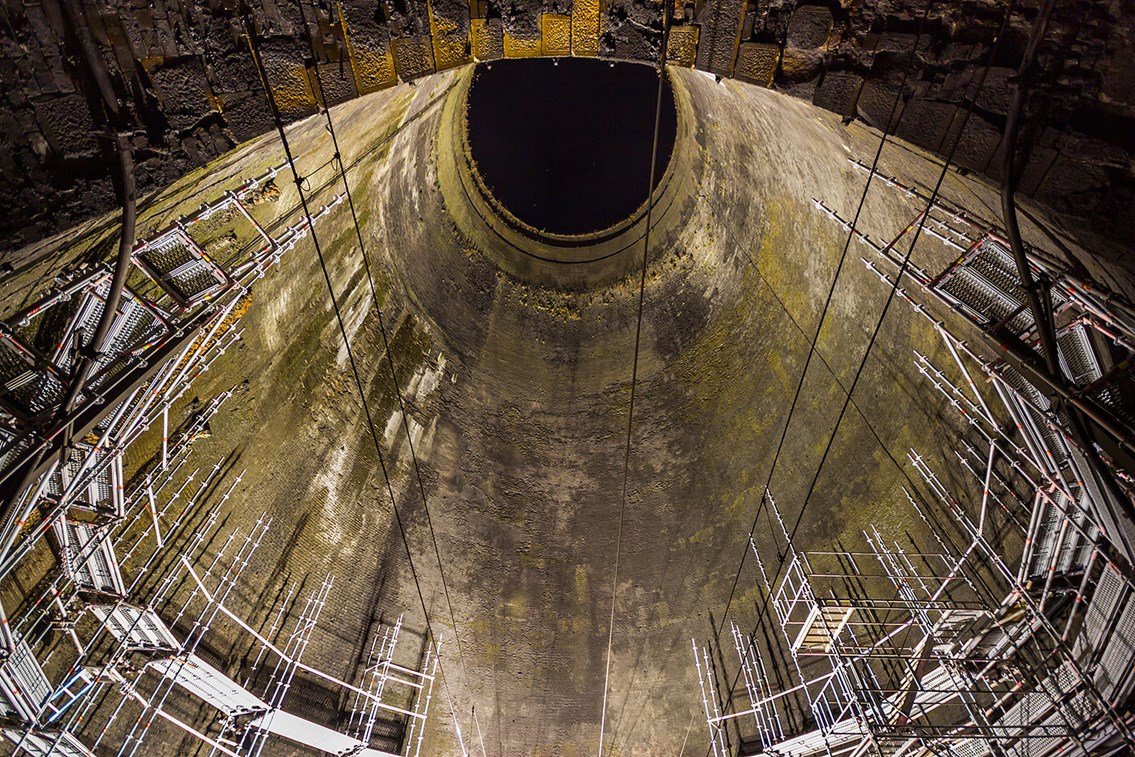Wednesday 16 May 2018
Iconic Northamptonshire landmark preserved for decades to come
- Region & Route:
- | North West & Central
A historic Grade II listed landmark on the West Coast main line near Rugby is being preserved for decades to come, thanks to Network Rail.
Repair and maintenance work has been carried out inside the impressive Victorian Great Northern Shaft which was originally built to provide light and ventilation inside the 1.5 mile long Kilsby Tunnel.
A huge scaffolding structure has been installed around the inside of the shaft, directly above the railway, so the work can be carried out while nearly 400 trains continue to travel at 110mph on the West Coast main line below every day.
The £3.5m refurbishment project, part of Network Rail’s Railway Upgrade Plan, has taken nine months and has included soot removal, brickwork repointing and repairs.
Hasan Shah, scheme project manager at Network Rail said: “This stretch of the West Coast main line is vitally important to local, regional and national rail travel. We’ve carefully planned the repairs to allow trains to run while we completed this essential work.
"Not impacting passengers and freight was vital and the huge, complex scaffolding structure has allowed us to do this with around 400 trains a day travelling up to 40 metres below us. The result will be a Victorian local landmark preserved for decades to come."
Great Northern Shaft repair facts:
- Kilsby Tunnel is around 1.5 miles long and is situated on the West Coast main line in Northamptonshire
- The tunnel was built in the 1830s using an estimated 30 million bricks
- Kilsby Tunnel has two ‘Great Shafts’ and 12 ventilation shafts
- Around one million bricks were used to build the Great Northern Shaft which weighs over 4000 tonnes
- A unique scaffolding structure was built from the bottom of the shaft to the top to allow the work to take place
- A protection deck, around 8m above the track, has allow the team to complete brickwork repairs while working above over 25,000v overhead lines
- Around 400 trains per day run underneath the worksite on one of Europe's busiest mixed use (passenger and freight trains) stretches of railway
The important work will make the rail network safer and more reliable for millions of passengers travelling on the West Coast main line every year. It will also preserve an iconic Victorian local landmark for future generations.
Contact information
Passengers / community members
Network Rail national helpline
03457 11 41 41
Latest travel advice
Please visit National Rail Enquiries
Journalists
Network Rail press office - North West & Central Region
0330 854 0100
NWCmediarelations@networkrail.co.uk
About Network Rail
We own, operate and develop Britain's railway infrastructure; that's 20,000 miles of track, 30,000 bridges, tunnels and viaducts and the thousands of signals, level crossings and stations. We run 20 of the UK's largest stations while all the others, over 2,500, are run by the country's train operating companies.
Usually, there are almost five million journeys made in the UK and over 600 freight trains run on the network. People depend on Britain's railway for their daily commute, to visit friends and loved ones and to get them home safe every day. Our role is to deliver a safe and reliable railway, so we carefully manage and deliver thousands of projects every year that form part of the multi-billion pound Railway Upgrade Plan, to grow and expand the nation's railway network to respond to the tremendous growth and demand the railway has experienced - a doubling of passenger journeys over the past 20 years.
Follow us on Twitter: @networkrail
Visit our online newsroom: www.networkrailmediacentre.co.uk

